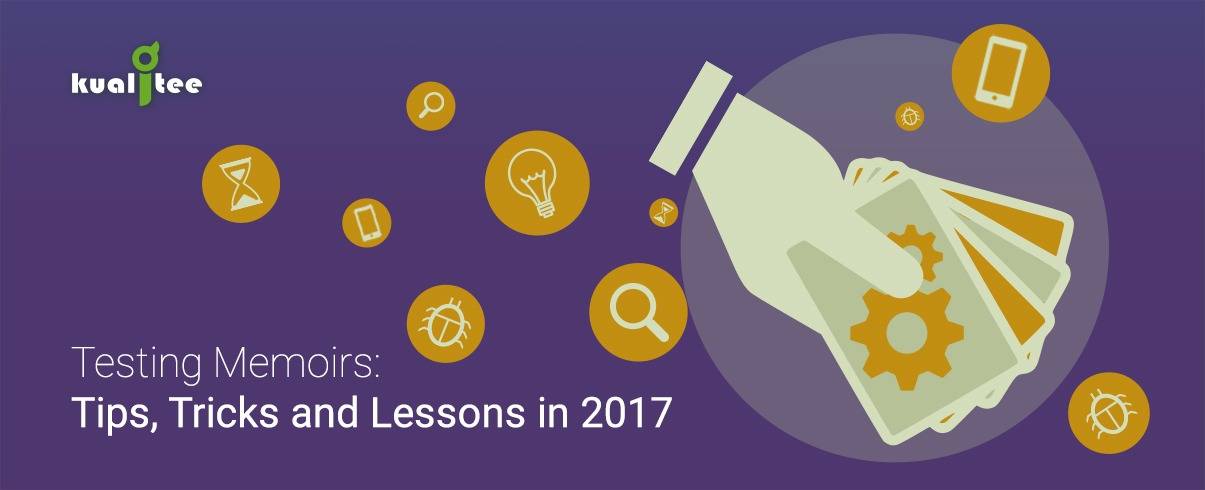Finally, 2017 is ending…It’s that time of the year when we all ponder upon what we did, what we lost, and what we should have accomplished. Same goes for testers.
This year was a roller-coaster ride for QA testers, with many highs and lows, gains and losses among different experiences.
Listed below addresses top of the most practiced and beneficial testing tips, tricks, and lessons learned in the year 2017:
Defining a Testing Culture
There are many critical aspects that can be discussed in this framework. But, the current year has taught us that cultivating a testing culture is important and should be prioritized. Because if a testing team cannot work with harmony and synchronization with others, concepts like agility and DevOps will remain a dream for them.
Keep these elements in view before setting a particular environment for your testing crew:
- Deployment of QA is not the only goal but the first step in any development cycle.
- Never overlook the importance of a nicely created bug report.
- Don’t forget to integrate QA testing tools in a testing cycle.
- Know when you should switch to manual testing from automation testing and vice versa.
- Thinking out of the box is the key, focus on making a difference in testing.
- Always remember, Testing is a team effort.
Preparing and Scripting Test Cases
Every professional tester recommends preparing and pre-defining each test suite at the beginning of a test cycle. It effectively saves time and money.
Read on the following tips that practically helped in the smooth formation of a test map:
- Create a draft of a product’s requirements, a graphical model that provides utter understanding about each feature and function of the specific software application. Clearly, define what a client requires from the product in the essence of its potential users.
- It is highly significant to consider everyone in the IT team responsible for QA. As mentioned earlier, testing is a team’s effort. If a developer responsibly sneaks into the details of every code review and already detects a good number of detects, it would be a quite happy moment for a tester. Save time for every team member!
This is how you achieve scrum workflows and sustainability at the same time!
Keep UX/CX on Priority
User experience has remained one of the major goals of every IT company this year. It is crucially important to make a product successful and popular.
Following are some tips and tricks that have helped in identifying ways to best UX/CX:
- End-to-end User Journey has been a critical testing trick used throughout the year. It helps in identifying the customer’s behavior while using the product or how he/she will respond to it initially.
- In user analysis, the emotional factor can’t be neglected. It efficiently assists in learning users’ needs and expectations from a specific product. User analysis helps in building a user foundation that proceeds the further assessments.
- Exploratory testing has considerably assisted the situation where the testers felt completely stuck in the incognito. It is practiced during the initial research of a product and provides pre-determined analysis and indications for a test cycle.
Next time you encounter something buggy or new in the test case, don’t stress, instead, learn to fix it!
Performance Testing lets the tester ensure the quality of responsiveness of an application is uncompromised, measure the resource utilization, and simulate the concurrent users to check the workload at a specific peak time. It provides a logical and analytical elaboration of the end-results that deliberately decides the performance of a product.
This test type has greatly saved ample apps/websites from crashing in 2017.
How Testers Improved Testing Efficiency with Planning
Testing efficiency is not hard if the testing team has a well-thought plan. If you fail to plan, you plan to fail.
It is the duty of a QA lead to decide testing goals keeping in view the future prospects. A comprehensive test plan must cover testing scope, budget reservations, deadline, execution status, prone risks, critical documentation, bug reporting, and many more. This is everything that aided most of the annoyed testers to reach their testing goals in the year 2017.
Leaving no Chance for Bug Detection
How a tester manages the end-results defines how he took leverage from the UX of that product. At the end of every test cycle, a tester would get “fail” or “pass” as a result. But it’s not something final. The end-results provide you an opportunity to repair any bottlenecks and delays in the product’s performance, leaving no chance for any further bug detection.
In 2017, these tips and tricks have greatly influenced the testing skills of every tester and kept every rising QA tester moving up.
2018 is just around the corner. Are your testers ready to come up with some more inventive methodologies to cater the testing infrastructure?
It’s time get geared up and show the world that testing might be hard, but planned strategies and the latest technologies will make it easier and more secure for the future.


























